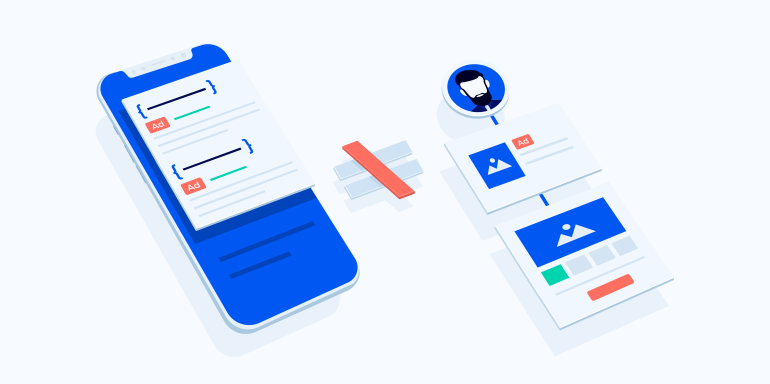Personalization is the buzzword word in digital advertising with many software in the ad tech space boasting personalization capabilities.
Why? Because personalization works — reducing acquisition costs by as much as 50%, lifting revenues by 5–15%, and increasing marketing spend efficiency by 10–30 percent. And yet only 12% of advertisers claim their personalization strategies are performing well.
Why the discrepancy?
Because what most advertisers believe to be personalization is not true personalization at all. It’s merely a primitive version of the advertising technique. We’re talking about dynamic ads and landing pages that use dynamic text replacement (DTR) and dynamic keyword insertion (DKI).
Today we’ll highlight why dynamic text replacement and dynamic keyword insertion shouldn’t be confused with a true personalized 1:1 ad-to-page experience.
What is dynamic text replacement?
Dynamic text replacement (DTR) can help you create relevant messages by changing the content of your post-click landing pages based on different parameters, like URL, for instance. It offers very basic contextual relevance from ad to post-click page, which allows you to message match ads and corresponding landing page experiences.
Using the feature means you don’t have to create separate relevant, personalized post-click pages for each audience segment. Instead, you can use dynamic text to make a single landing page specific to multiple keywords.
Suppose you have this landing page with DTR code enabled with brackets. Notice how the content changes based on the URL parameters changing for name and city:
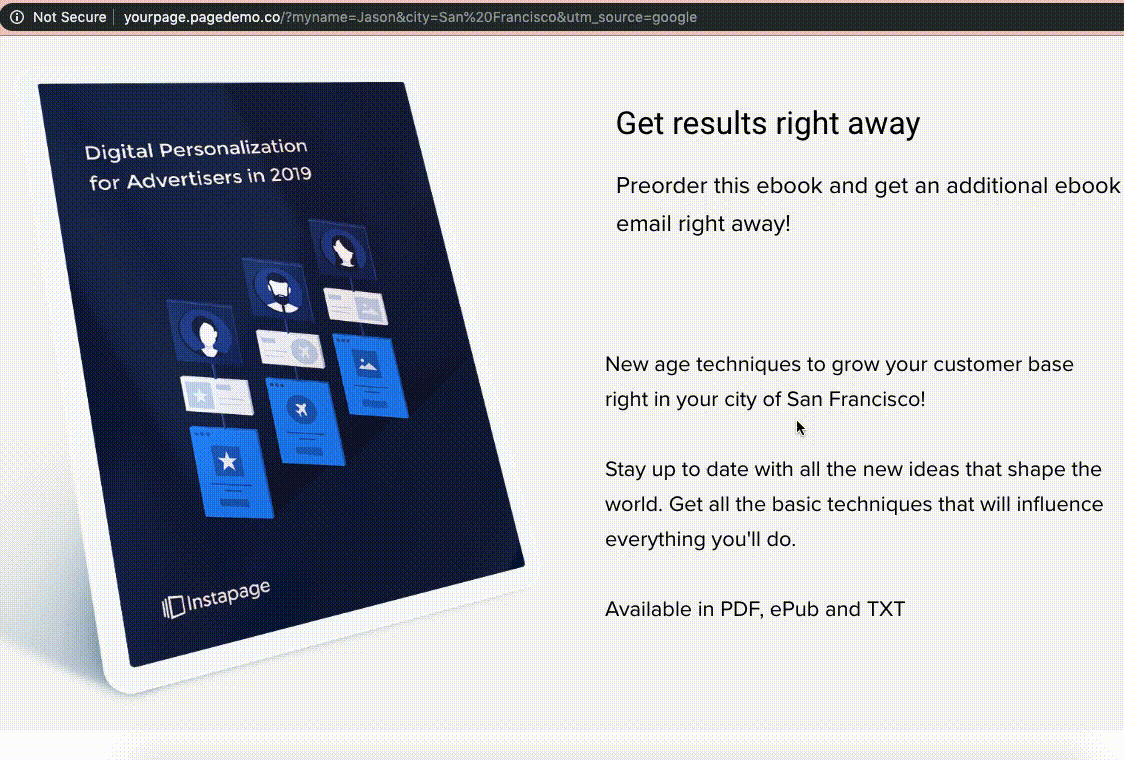
That sort of relevancy is nice and can increase conversions, but the message match consistency starts with dynamic keyword insertion.
What is dynamic keyword insertion?
Dynamic keyword insertion (DKI) is a feature offered by advertising platforms Google and Bing to automatically insert the user’s search terms into your ad copy to increase an ad’s relevancy and click-through.
Suppose you’re advertising a chocolate shop on Google Ads. The keyword insertion code in your ad headline could look like this: Headline: Buy {KeyWord:Chocolate}
Both ad platforms will try to replace this bracketed code with one of your keywords in your ad group (“dark chocolate,” “sugar-free chocolate,” “gourmet chocolate truffles”). When it can’t, it’ll use the word “Chocolate.”
Note that the person’s search term isn’t always the same as the keyword:
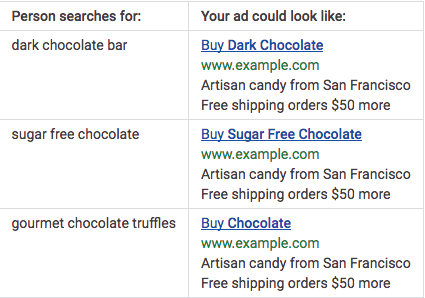
Dynamic ads and post-click pages that use DTR and DKI offer users a basic message match experience. Although this experience does help establish relevance between the pre- and post-click landing page, it is not true personalization.
The biggest restriction
The biggest restriction with DTR and DKI is that they are limited to ad networks that rely on keyword searches, primarily Google and Bing. Using both features, advertisers can’t create personalized post-click landing pages on social networks such as Facebook Ads or LinkedIn because ads on these platforms are not keyword-driven.
Instapage founder & CEO Tyson Quick elaborates:
Dynamic text replacement is great for simple word changes like a particular location match. However, it's hard to match the context of a visitor’s intentions with a simple keyword or location insertion.
For this, you need robust context matching that requires a completely new experience; different page sections, different image backgrounds, and a different story narrative. This is where 1:1 ad-to-page personalization comes in.
So, how can advertisers attach unique post-click landing pages for all digital ads? With 1:1 ad-to-page personalization.
What is 1:1 ad-to-page personalization?
Creating true personalized experiences for every audience you encounter is all about context.
When you create a 1:1 ad-to-page personalized experience, you connect every targeted ad with a relevant post-click page that perfectly matches the user’s intent along with the keyword search query. To demonstrate, clicking this Instapage search ad discussing integrations directs users to the following post-click landing page (above the fold only):
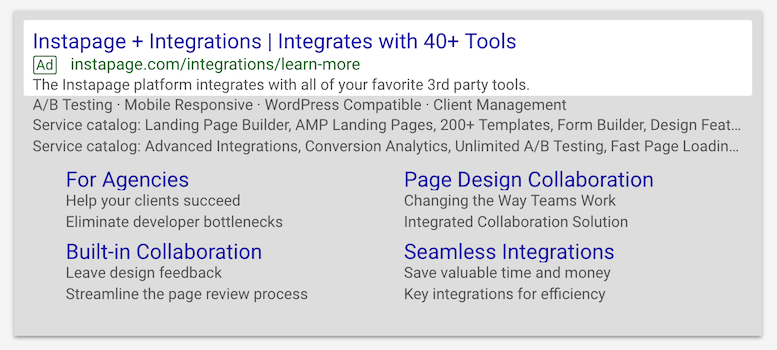
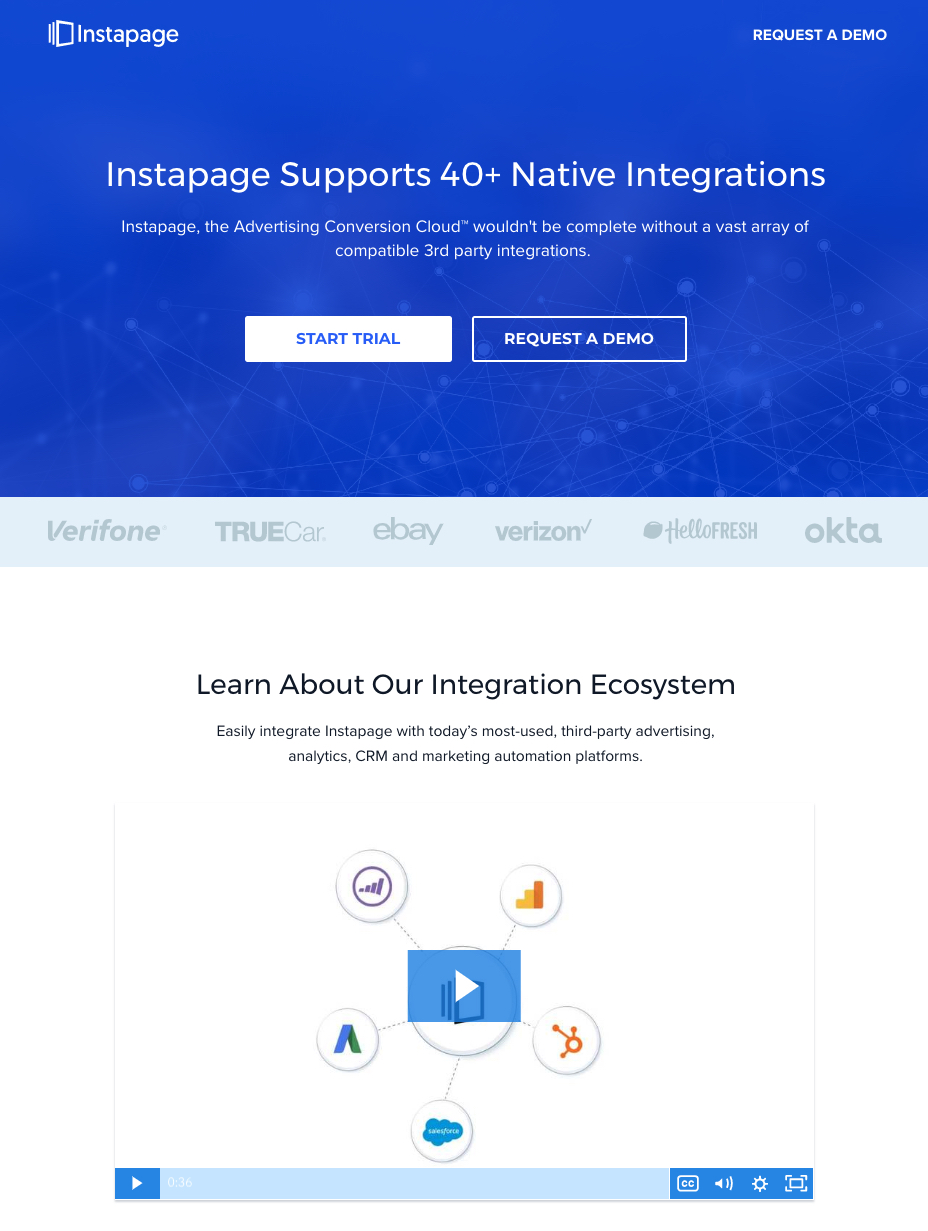
Compare that to this example on mobile where the ad discussing WordPress hosting sends you to this new experience:
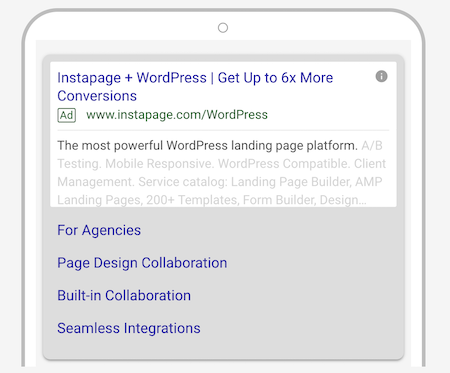
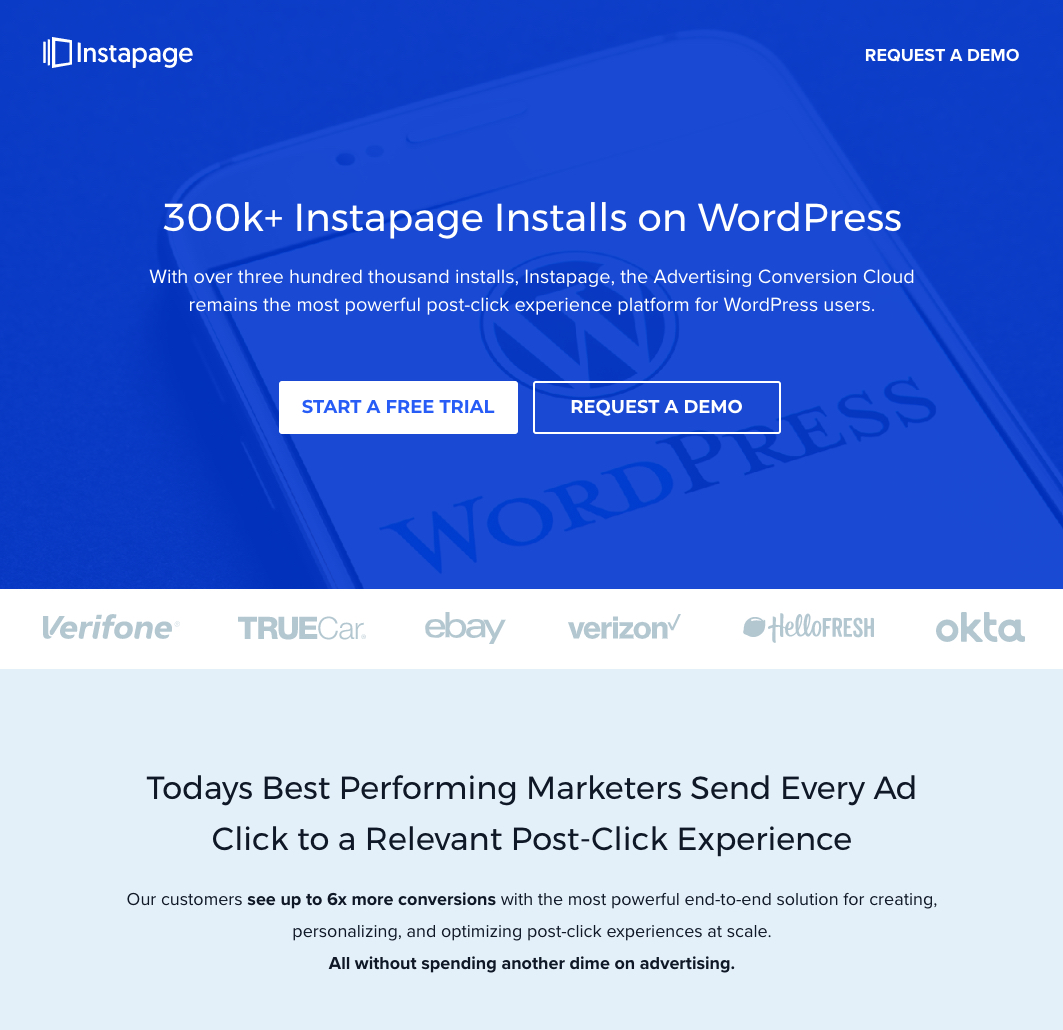
Both post-click landing pages use the exact same URL, except the last UTM parameter:


This subtle difference may not look very different on the front-end to the untrained eye, but this personalization would not be possible without the server-side dynamic audience targeting. Effectively, this experience is using sophisticated targeting built into the ad platforms with UTM parameters.
Personalization is more about matching the narrative and context of a potential customer right after they click your ad.
By sending your campaign/ad group/ad traffic to a highly relevant post-click landing page, you let potential customers know that you understand what they’re looking for and have a solution for them. By only using dynamic ads and post-click landing pages, you run the risk of not engaging your target audience since DTR only offers a basic and over-simplified version of personalization.
Tyson highlights the difference with an example:
Suppose a millennial clicks a mobile ad for home insurance, and they’re provided with a post-click landing page built for desktop and your primary baby-boomer persona? That visitor is going to exit faster then they clicked on the ad, even if the ad and post-click page dynamically changed to the millennial's primary search term.
This kind of experience not only results in wasted advertising budget but you would’ve likely turned away the millennial for good.
Now that you know what true ad-to-page personalization entails, let’s detail how you can create the best 1:1 ad-to-page experience.
How to create 1:1 personalized experiences in Instapage
The Instapage Personalization solution empowers advertisers to maximize conversions with 1:1 personalized post-click landing pages.
With the personalization solution you can:
- Create any number of unique page experiences for a post-click landing page
- Attach experiences to specific audiences
- Serve the right experience in real-time to the right audience
- Automatically revert to a default experience for audiences not attached to any experience
- Add or delete experiences from a page in real-time
- Create variations for a page experience to split test within a certain audience
- Identify high-performing audiences by tracking metrics at audience level
To provide unique experiences to audiences you have to identify the UTM parameters, i.e., the tracking code within Instapage.
When you sign into the app, clicking any of the pages will bring you to the default experience for that page. For instance, if you were customizing the San Francisco post-click page in the builder with the Golden Gate Bridge, that is your default experience. In the margin, you see an expanded list of settings for the default experience — URL, Integrations, Conversion Goals, SEO, Social Info, Scripts & GDPR:
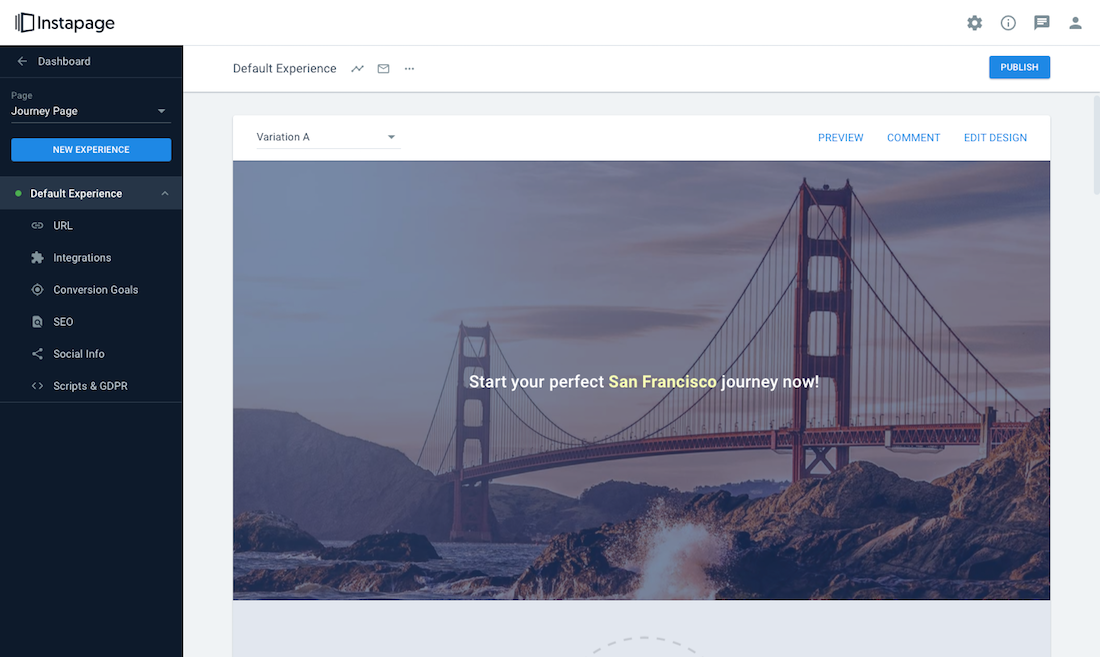
Clicking the blue “New Experience” button opens the module here to name it. For this example, let’s use London:

(Note: Creating a new experience effectively duplicates the default experience (and all corresponding settings.)
Then, clicking “Edit Design” takes you to the builder where you can customize the new experience. You can now see both experiences in the left margin:
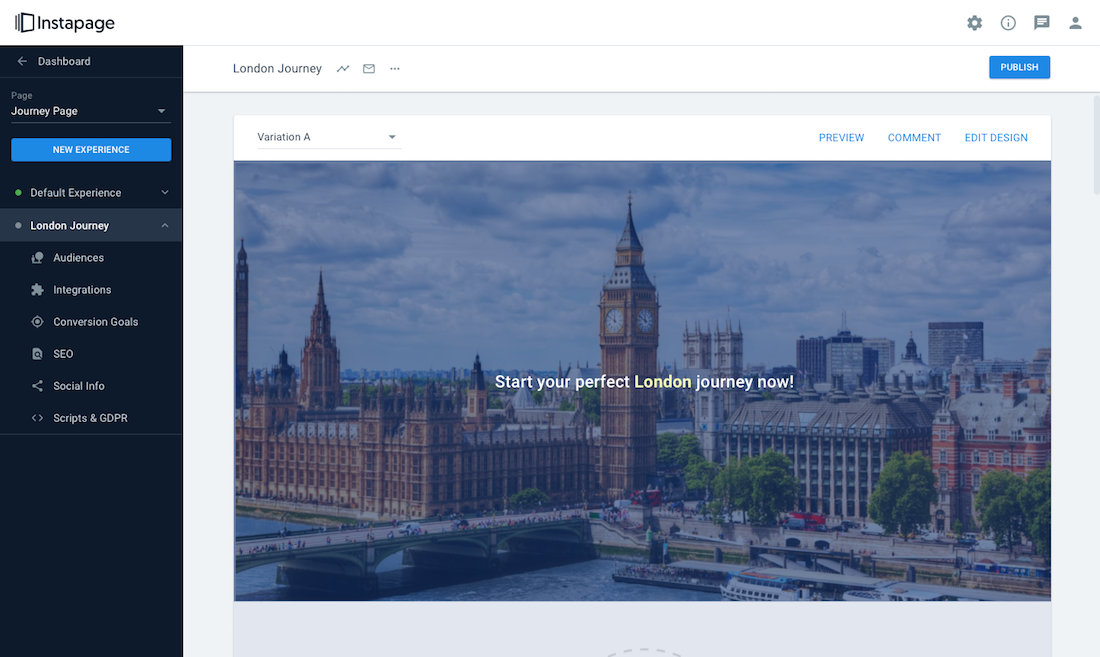
With a new experience, it’s time to determine the audience that sees it. Under the London Journey experience, clicking “Audiences” brings you to the UTM parameters:
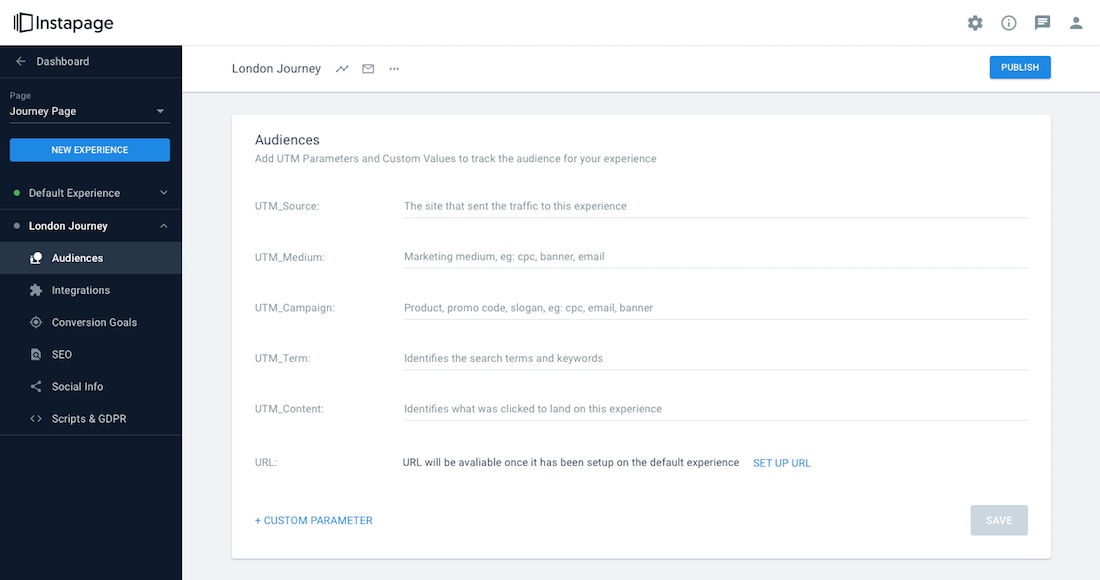
In addition to the five most common parameters listed above, you have the option to create custom parameters, too. Once you set and save the audience parameters, only people who match the parameters you identify will see the new experience.
Personalization solidifies Instapage as a key part of the advertising funnel that handles the post-click stage to optimize conversions. Armed with the power of true personalization, you can have your ads and post-click landing pages work in complete sync to maximize conversions and advertising ROI.
Don’t settle for dynamic replacement text as personalization
Dynamic text replacement was an early, over-simplified solution to a complex problem. Now that advertisers have advanced personalization capabilities at their disposal, you don’t have to be content by simply replacing text mentions on the page.
See how to create and optimize unique experiences for any target audience in minutes and at scale by getting an Instapage Enterprise Demo today.

Get a Personalization Demo
See how easy it is to create unique experiences for any audience you target.
